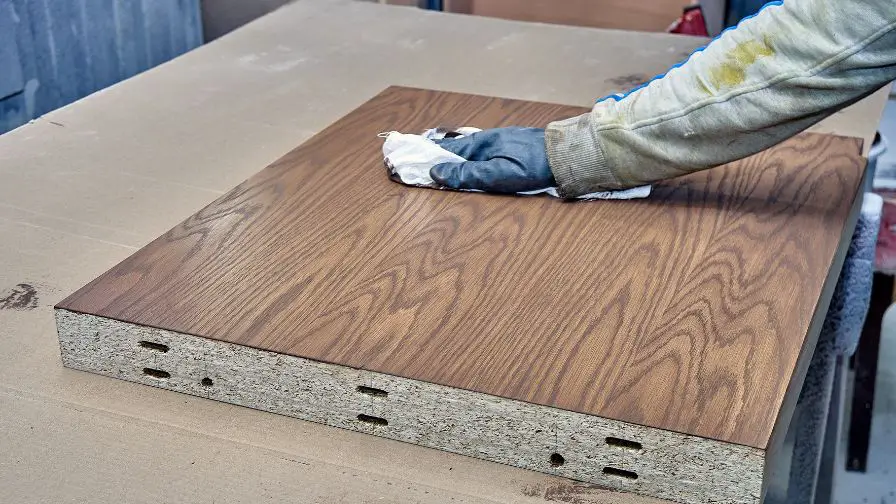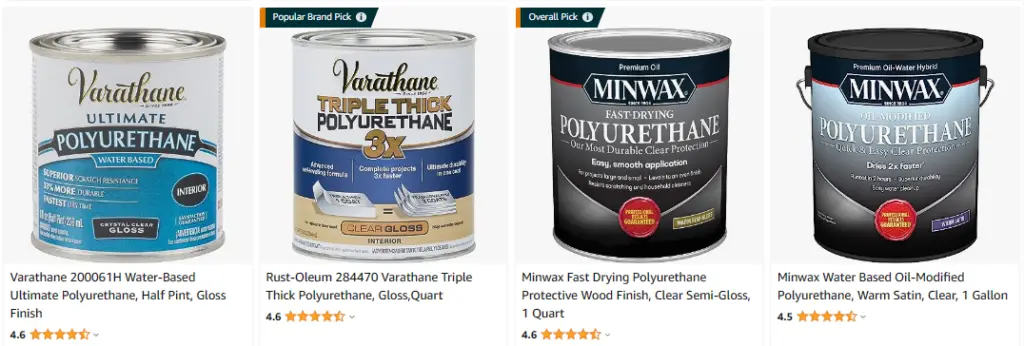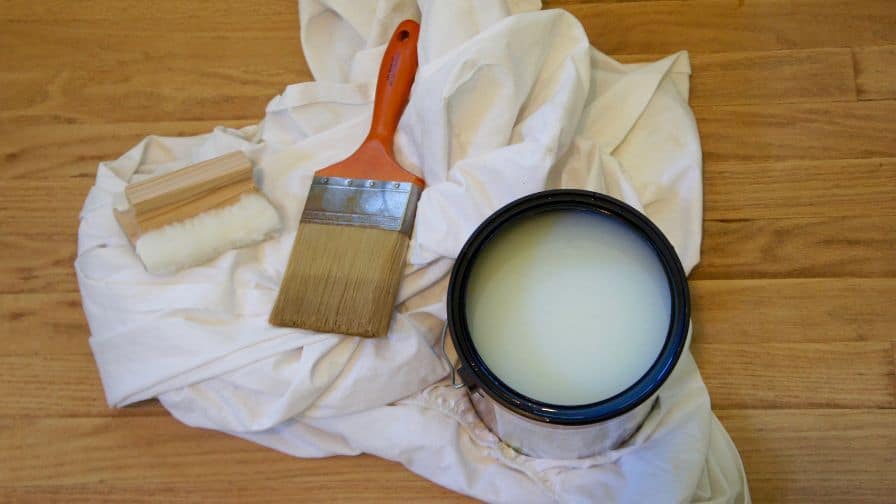
When it comes to coating and finishing wood, there are a lot of options on the market. One of the most popular types of finishes is oil-based polyurethane. This type of finish has been around for many years and is known for its durability and high shine. But how long does oil-based polyurethane last?
In this blog post, we will answer that question and provide some tips on how to make your finish last longer!

Click Here To Check The Pricing On Amazon
How Long Does Oil-Based Polyurethane Last And What Factors Affect Its Lifespan?
Oil-based polyurethane is one of the most durable finishes available for hardwood floors, but it can last between 10-20 years. The lifespan of oil-based polyurethane depends on several factors, including the type of wood and the traffic in the room.
Here’s what you need to know about how long oil-based polyurethane lasts and how to make it last as long as possible.
Type of Wood
The type of wood you have will play a big role in how long your oil-based polyurethane will last. Harder woods, like maple and oak, will resist wear and tear better than softer woods, like pine. When you have a high-traffic area, like a kitchen or living room, you’ll want to choose a harder wood for your floors.
Traffic in The Room
The amount of traffic in the room will also affect how long your oil-based polyurethane lasts. When you have a busy household with kids and pets, your floors will see more wear and tear than having a quiet household. In the case of high-traffic areas in your home, you may need to reapply oil-based polyurethane sooner than in low-traffic areas.
Proper Application
When you’re applying oil-based polyurethane, it’s important to do it properly. If you don’t apply enough polyurethane, your floors are more susceptible to wear and tear. You’ll also want to make sure you’re applying a thin layer of polyurethane so it can dry properly. If you apply too much or not applied evenly, your polyurethane won’t last as long.
Temperature and Humidity
The temperature and humidity in your home will also affect how long oil-based polyurethane lasts. When it’s too cold or too humid, the polyurethane won’t dry properly and is more susceptible to damage. It’s important to maintain a comfortable temperature and humidity level in your home to make sure your polyurethane lasts as long as possible.
By following these tips, you can make sure your oil-based polyurethane lasts as long as possible. Oil-based polyurethane is a durable finish that can last for years with proper care. When you’re choosing a finish for your hardwood floors, keep these factors in mind to make the best decision for your home.
What Is Oil-Based Polyurethane And How Does It Work?
Oil-based polyurethane is a type of sealant commonly used on wood floors. It works by creating a barrier between the wood and the outside world, protecting the floor from scratches, stains, and other damage.
Polyurethane is available in both water and oil-based formulas. But oil-based polyurethane is more durable and longer lasting.
Subscribe to Jen Woodhouse on YouTube
Tips To Make Your Oil-Based Polyurethane Finish Last Longer
Your oil-based polyurethane finish can last a long time when you take care of it properly.
Here are some tips to make your finish last longer:
-Avoid using hot water or harsh chemicals on your countertops. These can break down the finish and cause it to peel.
-Wipe up spills immediately. Oil-based polyurethane is susceptible to staining. So it’s essential to remove any spills as soon as they appear.
-Apply a new coat of finish every few years. This will help protect the underlying wood and keep your countertops looking new.
By following these simple tips, your oil-based polyurethane finish can last for years! With proper care, it will continue to look like new and protect your countertops for years to come.
Alternatives To Oil-Based Polyurethane
When you’re looking for alternatives to oil-based polyurethane, there are a few options available.
Water-based polyurethane is one option that can also serve as an alternative. This type of polyurethane is less toxic and has a shorter drying time than oil-based polyurethane.
Another option is to use a natural oil finish. Do this by using a mixture of beeswax and linseed oil. This mixture will need to apply with a cloth and then buffed into the wood.
You could also choose to not use any type of polyurethane or oil finish at all. This is an option when you’re looking for a more natural look for your wood. Keep in mind that without any type of finish, your wood is more susceptible to staining and damage.
No matter what alternative you choose, make sure you test it out in a small area before applying it to your entire project. This way, you can see how it looks and how well it holds up.
How Long Does Oil-Based Polyurethane Floor Finish Last?
Your oil-based polyurethane could last 10-20 years on your floor.
Oil-based polyurethane floor finish is one of the most durable finishes available. It can stay good for years with appropriate care and maintenance.
However, take note of a few things that can reduce its lifespan, such as:
• Exposure to sunlight: Sunlight can cause the finish to fade over time.
• Heavy traffic: Heavy foot traffic can wear down the finish, making it more susceptible to scratches and scuffs.
• Water damage: Water can cause the finish to peel or bubble up.
To keep your oil-based polyurethane floor finish looking its best, follow these tips:
• Clean up spills immediately: Oil-based finishes are susceptible to water damage. So it’s important to clean up any spills as soon as they happen.
• Use rugs and mats: Putting rugs and mats at entryways will help decrease the amount of dirt and debris that stays on the floor.
• Wax the finish: Waxing the finish will help protect it from scratches and scuffs.
By following these tips, you can help extend the lifespan of your oil-based polyurethane floor finish.

Can Oil-Based Polyurethane Be Too Old To Use?
An unopened can of polyurethane will last indefinitely. Once opened, however, the shelf life is only about two years. After that, the product starts to degrade and will become unusable.
The best way to store opened cans of polyurethane is in a cool and dry place. When you do this, the product will last for much longer than two years. However, even as you take these precautions, the polyurethane will go bad.
When you’re not sure whether your polyurethane is still good, there’s a simple test you can do.
First, open the can and smell it. If it smells bad, it’s too old to use.
Second, apply some of the product to a piece of wood. When it dries hard and doesn’t leave behind a sticky residue, it’s still good. However, as it dries soft or tacky, it’s too old to use.
When you have a can of polyurethane that’s more than two years old, it’s best to buy a new one. It is tempting to try and save money by using an old can, but it’s not worth the risk. The polyurethane that’s too old won’t give you the results you want, and it could even damage your floors.



